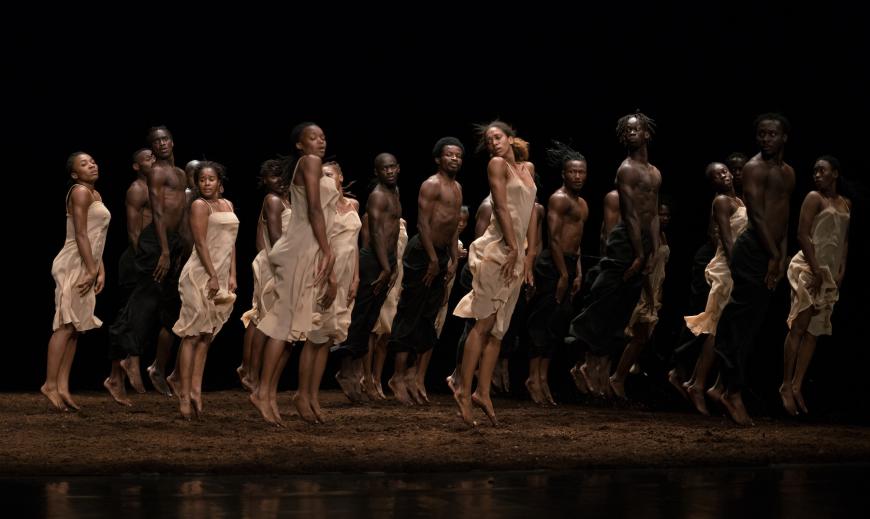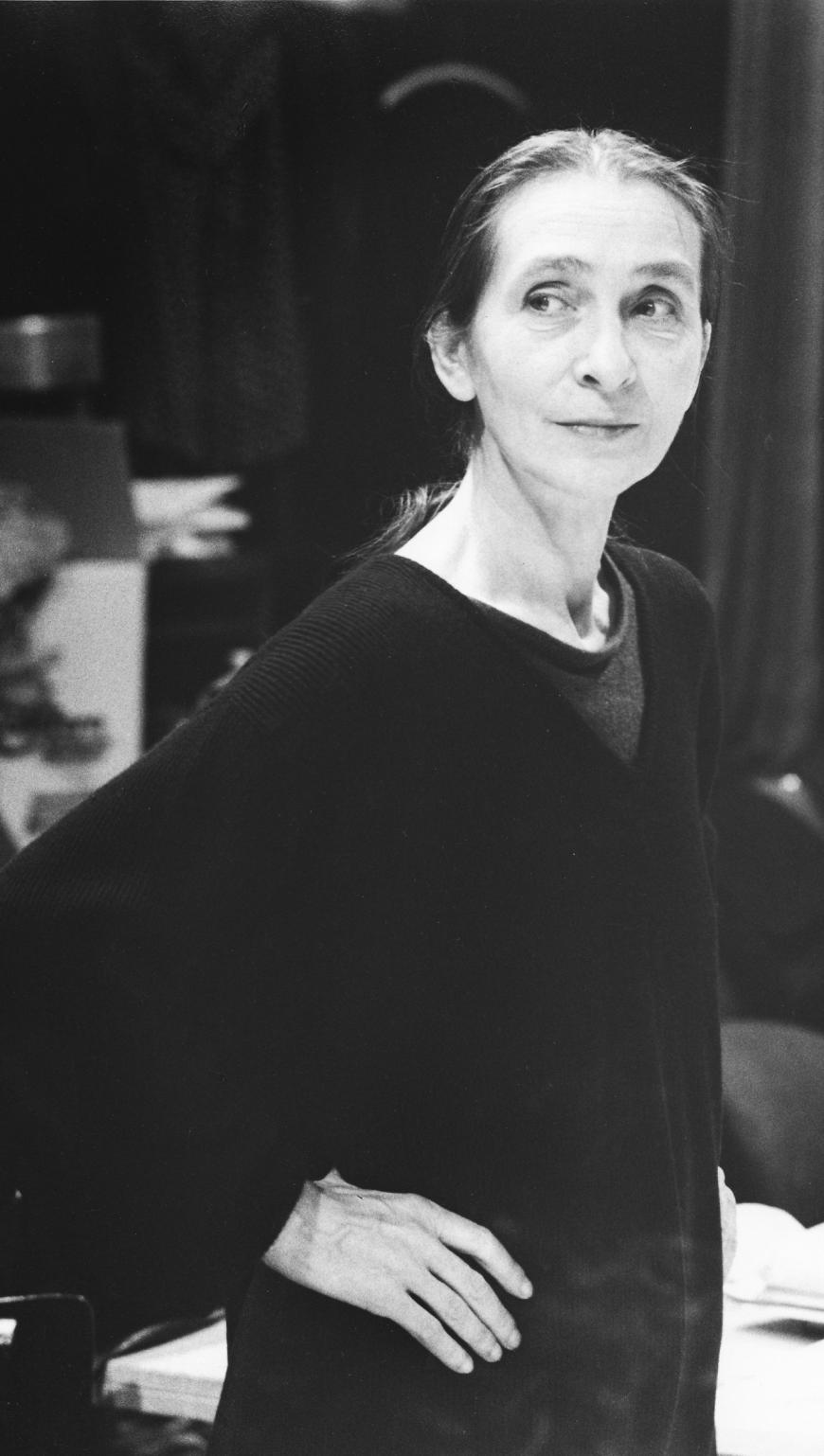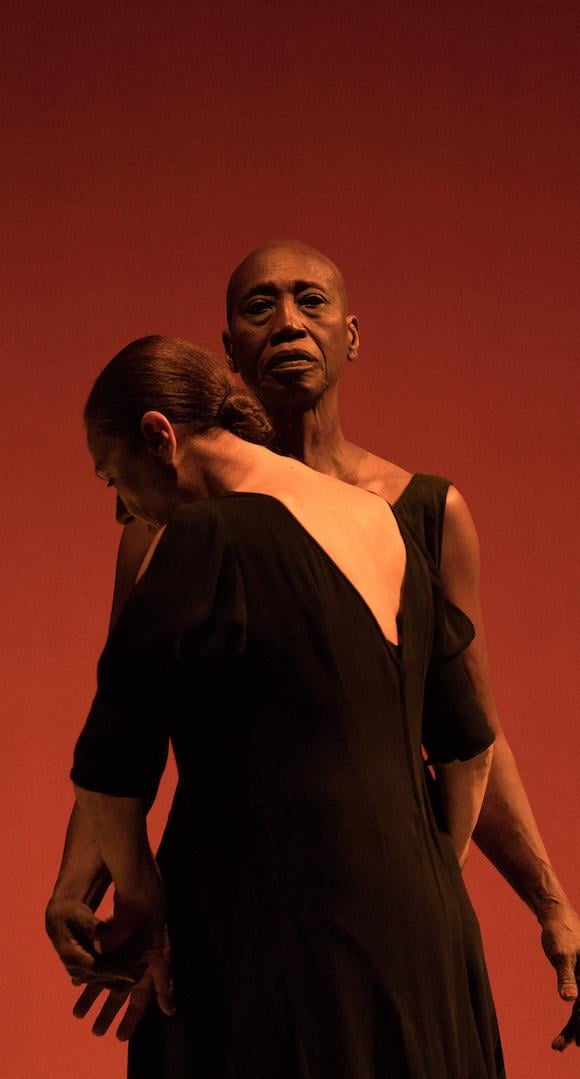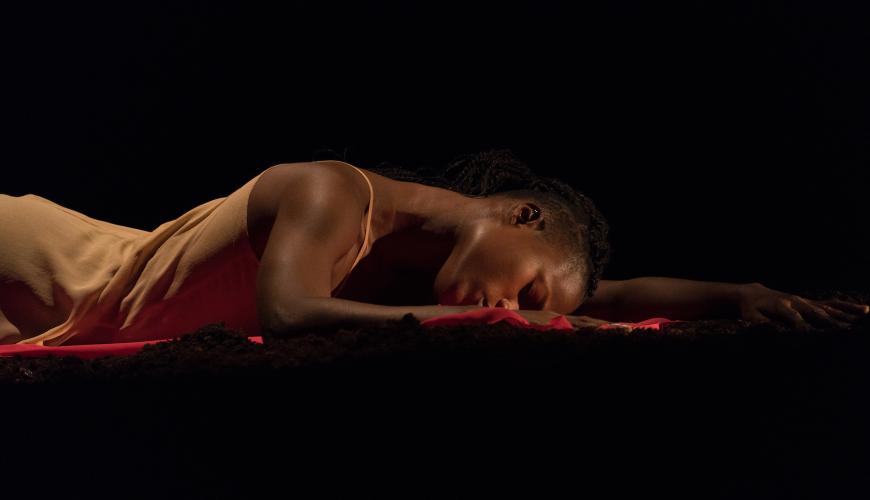
Every generation remembers the peak events of its era; people can recall exactly where they were and what they were doing at those defining moments. For many dance lovers, one of those was hearing that the world-renowned German choreographer Pina Bausch had died on June 30, 2009 — I remember staring blankly at the computer monitor for a very long time. That shocking news was compounded three weeks later by the death of Merce Cunningham, another dance-making giant.
But legends live on. California will be welcoming Bausch’s brilliant and harrowing The Rite of Spring this month as it reemerges in a new form, along with the recent piece common ground[s], choreographed and performed by Germaine Acogny and Malou Airaudo. This time, Bausch’s work is not being danced by her own company, Tanztheater Wuppertal, but by a new troupe of dancers pulled together by the project’s international mix of producers — the Pina Bausch Foundation in Germany, Sadler’s Wells in the U.K., and the École des Sables in Senegal. Performances will be Feb. 8–11 in Los Angeles, presented by The Music Center at the Dorothy Chandler Pavilion, and Feb. 16–18 in Berkeley, presented by Cal Performances at Zellerbach Hall.

Shortly after Bausch died, her son Salomon established the Pina Bausch Foundation (of which he is the chair of the board of directors) and the Pina Bausch Archives as a means of keeping his mother’s art alive for generations to come. It was important to guarantee that Bausch’s choreography would be performed well into the future. A new building for the foundation and archives, currently under construction, will also provide a physical space where people can meet and create.
In addition to Tanztheater Wuppertal, a number of well-established dance companies have performed Bausch’s 1975 choreography for The Rite of Spring: English National Ballet, Opera Ballet Vlaanderen, and Staatsballett Berlin. Transmitting choreography to other companies always raises questions about what defines a piece and how different dancers might influence and change it. These ideas led to Salomon imagining what a new company of dancers with differing backgrounds and training would be like performing the piece together.
Salomon was already acquainted with Acogny’s École des Sables, located in a small fishing village not far from Dakar. Her reputation as the mother of contemporary African dance had preceded her, Salomon having heard about her training methods through German dancers who had gone to study with her.
Tanztheater Wuppertal has a long history of working with Sadler’s Wells. Bausch’s company first came to London in 1982, showing 1980 and Kontakthof, returning in 1999 with Viktor, in 2002 with Masurca Fogo, and in 2005 with Nelken and Palermo Palermo. In 2008 she brought Café Müller and The Rite of Spring and returned later that year as part of “Sadler’s Wells Celebrates.”
Bausch had started discussions with Alistair Spalding, Sadler’s Wells’ artistic director and co-chief executive, about future projects. Unfortunately, she didn’t live to see the most ambitious one: an unprecedented season of 10 back-to-back works of hers created in response to cities and countries that she had visited throughout her long career. The series was performed in London in June and July 2012 as a highlight of that year’s Cultural Olympiad.
In a written statement for Cal Performances, Spalding recalled his conversations with Bausch: “We spoke of the fact that Germaine Acogny’s École des Sables would be an ideal partner for a new work co-produced by Sadler’s Wells, which would have been the first created by Tanztheater Wuppertal in an African country. We arranged a trip to Senegal in the autumn of that year, but Pina’s health began to deteriorate, and the trip never happened. Following her death, when Salomon Bausch came to me with the idea of co-producing this program with École des Sables, he had no knowledge of the original 2008 discussion. This completed a beautiful circle of serendipitous events that is very much in harmony with the spirit of Pina.”

The project ended up being a double bill — the first piece, common ground[s], is a duet between two remarkable women, Acogny and Airaudo. They have both dedicated their lives to dance as teachers, choreographers, and performers. At the ages of 79 and 75, respectively, they are also artistically inspired by being mothers and grandmothers.
In a phone conversation, Ghislaine Granger, a senior producer at Sadler’s Wells, emphasized that both women “have had really successful careers in their respective spheres but in different ways. [Airaudo is] a very long-standing collaborator with Pina Bausch, so obviously from a Western perspective, and Germaine [is coming] from African dance,” with its many styles of native folk dance. Granger continued, “They’ve worked together, so that’s a very intimate exchange … and yet, they have many things in common that we don’t. For that reason the piece is really beautiful.”
Acogny and Airaudo’s collaboration also connected two dance schools. They began working on common ground[s] in November 2019 at the École des Sables and finished in February 2020 at the Folkwang University of the Arts in Essen, where Airaudo had taught until 2018. The music by Fabrice Bouillon was also created at both places. Then stage rehearsals and the lighting design development were held at Sadler’s Wells. This unique collaboration has turned out to be the perfect lead-in for audiences experiencing the new mounting of The Rite of Spring.
Igor Stravinsky’s score has been the focus of countless choreographers, everyone from Vaslav Nijinsky (the 1913 original) to Paul Taylor, Maurice Béjart, Bill T. Jones, and Mark Morris. Matching up African dancers to the music has only added to the resonance of Bausch’s movement vocabulary.
Choosing the dancers was an intense process. Auditions were held in Burkina Faso, Ivory Coast, and Senegal in December 2019, in which a total of 135 dancers who wanted to learn The Rite of Spring participated. The final workshop was held at the École des Sables. There, the rehearsal leaders danced together with 67 candidates to learn more about their technical skills and strengths as performers. Afterward, 38 dancers from 14 African countries were engaged for the reimagining of Bausch’s masterpiece.
The three artistic directors for the project — Josephine Ann Endicott, Jorge Puerta Armenta, and Clémentine Deluy — were all longtime former dancers with Bausch and had performed the piece many many times.
In a phone conversation, Armenta and Deluy described their experiences with the African dancers, who spoke different languages. Fortunately, dance is a physical language, and showing how the steps needed to be done was a matter of demonstrating them, not explaining verbally how to do them. Was the piece, originally created for dancers with ballet training, challenging to teach African dancers who hadn’t been trained in ballet?

Deluy said, “I realized that even though I had danced my role many times, I needed to learn all the other roles. I had never danced the Chosen One and didn’t think I could teach it. Then I realized that all the material was also in the parts for the other dancers. Sometimes I was asked questions, but I didn’t have any answers. The first thing I did was to continue collecting the knowledge of so many years as a dancer but this time with a very different perspective. I had to find the keys, the tools, to pass the vocabulary on to the dancers. We had dancers from very different backgrounds, very few people who did contemporary dance and almost nobody with ballet.”
“You have to coach the dancers,” Armenta said, “in order to bring them to the quality you are looking for inside. You need to decide what to say and what not to say.
The intensive rehearsal phase started in February 2020, with a team of former and current members of Tanztheater Wuppertal preparing the fledgling company for the premiere in Dakar on March 25, 2020. A tour to Wuppertal, London, Paris, and Amsterdam was to follow. Of course, the pandemic interrupted that.
Before disbanding in March 2020, the rehearsal directors and dancers seized the moment by taking The Rite to Toubab Dialaw, Senegal, for a last run-through on the beach. The spontaneity was caught by filmmaker Florian Heinzen-Ziob and his team, who preserved the moment of self-empowerment and togetherness in Dancing at Dusk — A Moment With Pina Bausch’s The Rite of Spring.
The production kept preparing to open, but the labyrinth of logistics to coordinate transportation and visas for 50 people was daunting. Just getting the dancers and support teams vaccinated and tested regularly for the coronavirus was an enormous headache. Brexit added to the complications, as personnel who once didn’t need visas were suddenly required to get them.
Granger realized that “we weren’t going to give up. It’s been truly exhausting, really draining in many ways and has pushed me and the team on every level, in every role beyond our usual limits. COVID in between all of that contributed for sure. But that’s not the only thing. It’s been really eye-opening and a life-changing experience to work on this. I have worked for over 25 years now in the industry, and I’ve worked with many artists and on many big productions. And I loved many of the positions I’ve worked in, but this is different. This is really special.”
On Sept. 23, 2021, the long-awaited premiere of common ground[s]/The Rite of Spring took place at the Teatros del Canal in Madrid, Spain. The company has been touring ever since and will continue through 2024. Don’t miss this unique experience.




